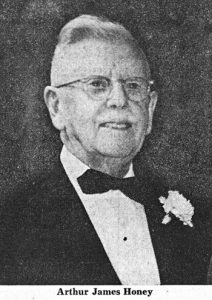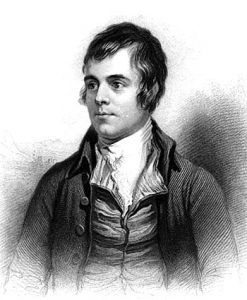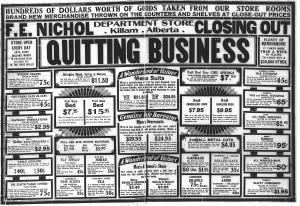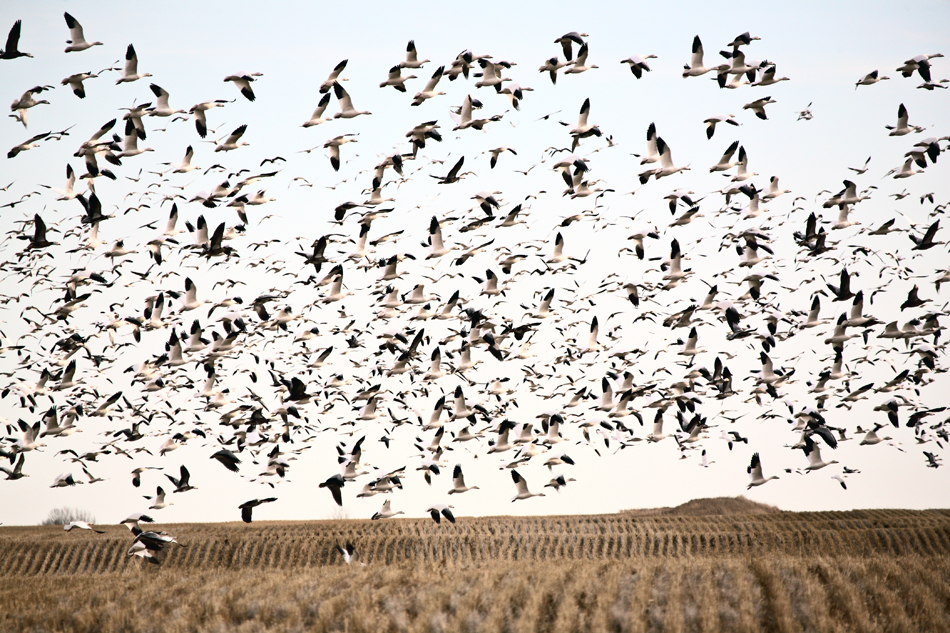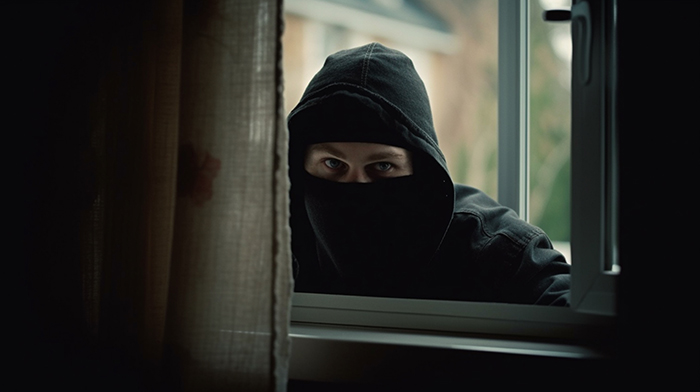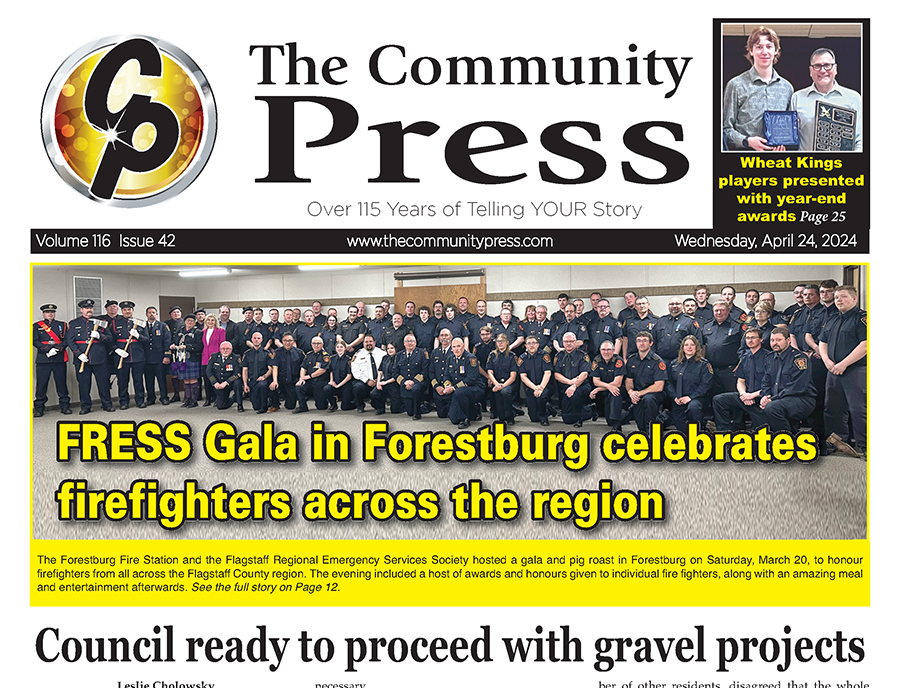From the Archives: Lougheed Legion honours CJ Kinross

Originally published in The Community Press – March 14, 1995 – Cecil John Kinross was just 22 when he won the Victoria Cross for heroic actions taken at Passchendaele during the First World War.
Members of the CJ Kinross Legion, Lougheed Branch No. 180, unveiled a cairn with a memorial plaque in his honour last Sunday afternoon. The service included playing of the Last Post followed by one minute of silence.
On hand to help with the dedications were Legion members from Camrose, Bawlf, Daysland, Sedgewick, Lougheed, Killam, Provoost, Hardisty, and Alliance.
“We are here today to dedicate this very special interpretive plaque of Cecil John Kinross, V.C.,” said Lougheed Mayor Tom Smithson.
All who spoke at the special service gave homage to the man named Kinross, whose VC citation saiid he won for “most conspicuous bravery in action during prolonged and severe operations.”
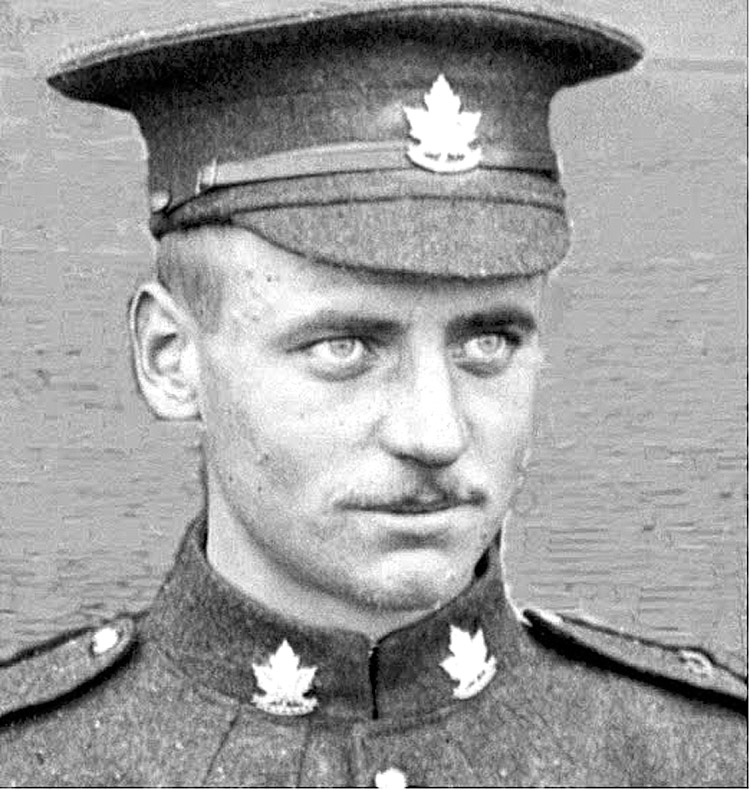
A member of Edmonton’s 49th Canadian Battalion, Kinross saved the lives of many on Oct. 29, 1917 when he single-handedly knocked out a German machine gun nest as it was mowing down Allied soldiers.
During that particular attack, his battalion came under intense artillery fire, making it impossible for them to advance because of the machine guns aimed at them.
In a moment of great decision, Pte. Kinross removed all of his equipment, except his rifle and ammunition, and crossed no-man’s land in broad daylight to charge the enemy machine gun.
He killed all six Germans manning the gun and took the machine gun over. “His superb example and courage instilled the greatest confidence in his company and enabled a further advance of 300 yards to be made and a highly important position to be established,” reads the VC citation given to Kinross.
He continued to fight with great bravery that day until he was seriously wounded with head, arm and side injuries. It wasn’t until the next year in March, 1918 that he read in the newspaper about his deed winning him the Victoria Cross.
Later that month, King George V did indeed present him hi Victoria Cross during a ceremony at Buckingham Palace.
Smithson related an amusing tale of Kinross being arrested by military police for illegally wearing a VC ribbon while he was waiting for a train in Scotland. He was quickly released when he took the VC medal out of his pocket and showed it to the Colonel.
Rev. Randy Hedeman said he had researched the “story behind the memorial” for Remembrance Day services last November.
“It’s quite the story, the story of CJ Kinross,” he said. The area around Passchendaele had originally been swamp land but, with the help of canals, the locals were able to turn it into farmland.
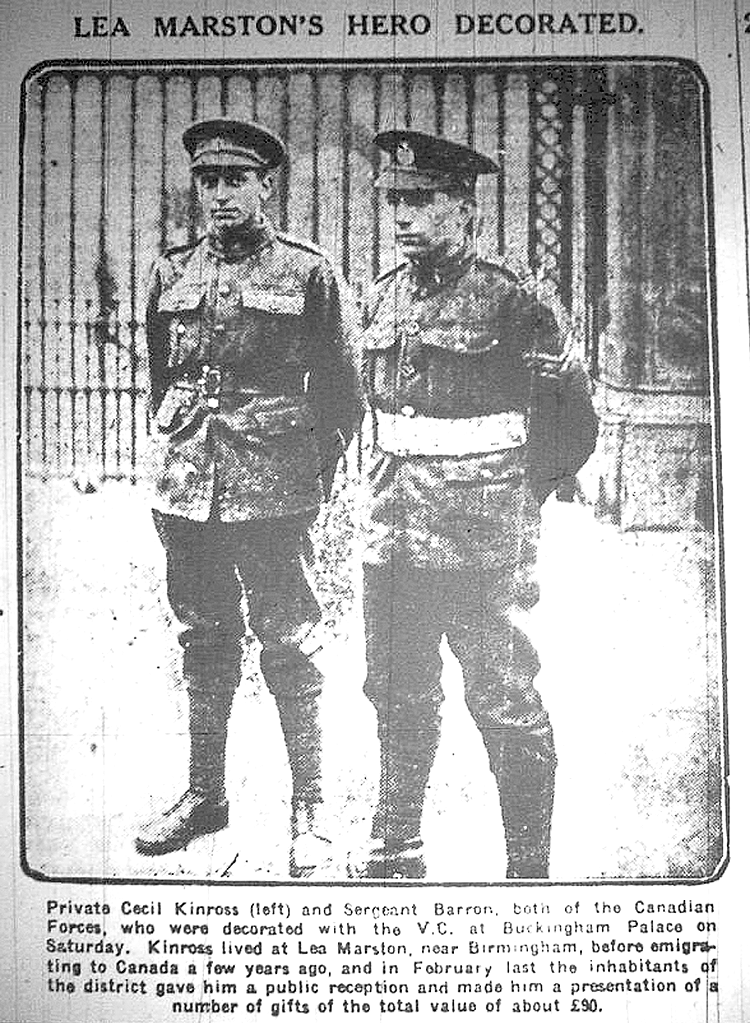
However, when the war came, the land once again reverted to what many soldiers called quicksand. In this particular campaign, the British had taken over from the unsuccessful French to try and push the Germans back.
After three months of hard fighting, they only gained three miles even though they were sending battalion after battalion into the German lines.
Soldiers reported watching helplessly while their wounded were sucked under by the mud. Each soldier was equipped with 100 lb. packs which held everything they would need to hold a position, including barbed wire.
When charging the enemy lines, they would climb up and out over muddy ladders, often losing their boots in the ooze below.
Calling war “madness” and “insanity,” Hedeman said that heroic acts can be created from these conditions, especially when the motive is to help fellow soldiers stay alive.
Hedeman reminded everyone of the Biblical quotation which states that no man has greater love than he who is willing to lay down his life for his fellow man.
The cairn dedicated to Kinross will allow his story to be told and will help hasten the day when there will be no wars, Hedeman said.
Born near Sterling, Scotland* on Feb. 17, 1896, Kinross immigrated with his family to Lougheed in 1912 after being educated at the Birmingham Grammar School in England.
After the First World War broke out in 1914, he enlisted in the 51st Battalion in October, 1915, and later transferred to Edmonton’s 49th Canadian Infantry Battalion.
After receiving his VC medal, he returned to farming in Lougheed in early 1919 where he continued to live the rest of his life.
Tom Barton, First Vice-President of the Alberta-NWT Command of the Royal Canadian Legion, spoke of Kinross as someone who knew him well in the years following the war.
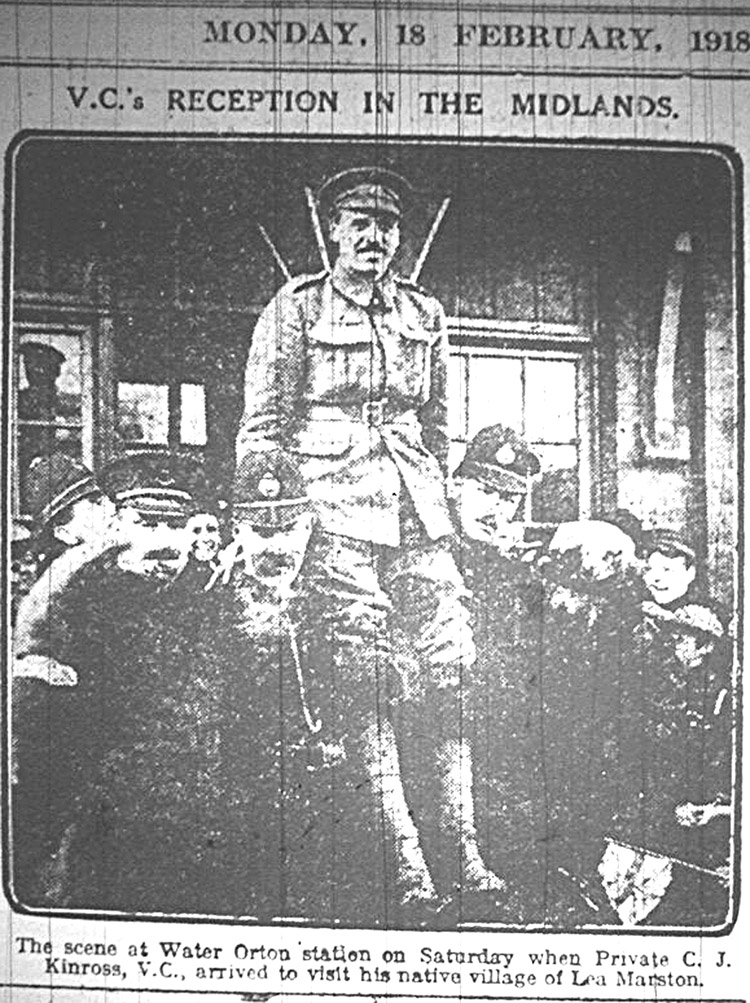
“It is here for a purpose,” he said of the cairn. “Having known CJ personally, I guess I have some feelings and I know there are members of the Lougheed Branch that knew him too.
“But Cec was doing what he thought was right, the ‘Canadian Way,’ as I call it. That was 77 years ago,” he said, adding that other soldiers had to follow up 50 years ago when the Second World War broke out.
Kinross was named Honourary President of the Lougheed Legion Branch when it was formed on Feb. 23, 1946. When he died on June 21, 1957 at the age of 61, the Lougheed Legion named the branch in his honour.
“We would like this plaque to be a reminder of those who have never see a major war… that ware is not good,” said Barton. “But also to remember that those comrades listed on the cenotaph who fought to keep Canada what it is today.”
The cairn carries an apt quotation in Kinross’s honour. It is taken from the fifth century Greek statesman, Pericles of Athens, who said: “For the whole earth is the Sepulchre of courageous men, and their story is not graven only on stone over their native earth, but lives on far away, without visible symbol, woven into the stuff of other men’s lives.”
Written by Patricia Harcourt
*Kinross’s Wikipedia entry states he was born at Dews Farm, Harefield, England while his Canadian Forces biography places his birth at Uxbridge, England.

